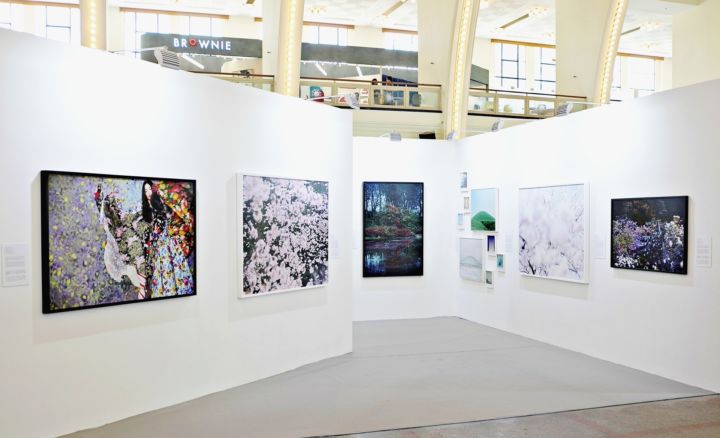Photofairs Shanghai
We marvel at, contemplate, enjoy flowers. Rooted in history of art, and still prevalent today, depictions of blossoms, and more generally of nature, have attracted artists for centuries. More specifically, female beauty has often been associated with flowers from Antiquity and Renaissance to Romantism. Photography has always had pictorial and iconographic affinities with painting. Forms and colors supplant reality. Photography is not different from painting. It gives access to the real but transcends it. It depicts nature but creates an image that lies beyond the surface. The image penetrates the mind and hold it there for a time, and interacts with our memories and thoughts. The artists brought together by Christophe Guye Galerie explore the photographic medium to reveal new forms of beauty. Some of them work in fashion photography and create images that glorify female beauty; others have developed works that depict their environment and celebrate beauty of nature. The selection of works associates these two worlds. This show is an invitation to a “reverie” where the natural world and the fashion world float in a realm of dreams.
Nick Knight (UK, b.1958) prefers the term ‘image-maker’ to ‘photographer’. For over three decades, Knight has been one of the most visionary artists in fashion photography, constantly pushing the boundaries of his medium. The artist thinks in colors and shapes, creating perfectly composed, harmonious images that goes beyond fashion photography. In addition to being one of the most respected fashion photographer, Knight is an artist at the forefront of innovative techniques. He constantly challenged the image-making to explore new ideals of beauty.
Erik Madigan Heck (US, b. 1983) explores the intersection of photography and painting as he borrows from and bends the genres of fashion photography and landscape painting. Heck quickly gained prominence as a fashion photographer while at the same time making a name for himself in the art world thanks to his very unique photographic language. Influenced by Romantic painters, Impressionists and Les Nabis, he is able to convey the essence of painting through his work playing in a very subtle way with colors and a pointillist style, producing dreamlike images that transcend time.
Rinko Kawauchi (Japan, b. 1972), who won international acclaim through her photobooks, observes nature. Inspired by Shinto, a Japanese religion devoted to the sacred essence of nature, she considers that no subject is too brief or ordinary to not be photographed. Rinko Kawauchi photographs everyday moments, nature that surrounds her. She depicts little things and the result is always very poetic in the way colors and shapes interact. Her subjects can be ephemeral but somehow they determine the fragility of existence. Rinko Kawauchi harmonious images are often shown in groups or sequence as if she composes music. With an approach to reality in the smallest details – most of them often unnoticed, her photographs have often been described as visual haikus.
Risaku Suzuki (Japan, b. 1963) dedicates his medium to observe his environment and nature. His images have no context and no narrative. They are both photographic and pictorial. For the artist, who has developed the series on several years, photographing cherry blossoms is an act of seeing and a way to explore the photographic medium. In his work, he intentionally lets the foreground and background go out of focus making it difficult to distinguish between the two. The beauty of the Sakura lies in the brevity of the blossoming. The subject has inspired Japanese artists for centuries as the blooming of the trees after winter symbolizes hope and strength but as the petals fall, one is reminded of the fragility of beauty and life itself. Risaku Suzuki simple yet elegant photographs aim to convey not only the flowers’ visual delight but the passage of time.
Jun Ahn (South Korea, b.1981) gained recognition on the international scene with a series of self-portraits made on the top of skyscrapers and that depict the artist leaning over the side of a building or leaping up onto its edge. With her latest series, Jun Ahn has developed intriguing works that again transcend gravity. Here the artist captures apples suspended in mid-air. As in the self-portrait series, there is no digital manipulation. With this work, Jun Ahn extends her research about the relationship between performance and photography as the shooting itself requires precision and patience. Her interest lies in the apples floating in air, as if they revolt against the destiny of falling.
Text by Nathalie Herschdorfer
